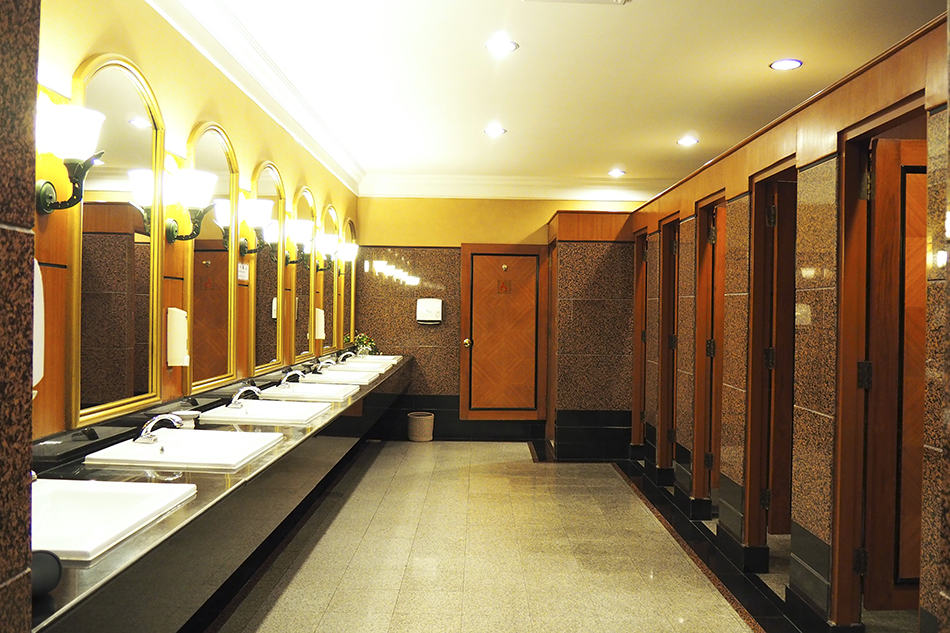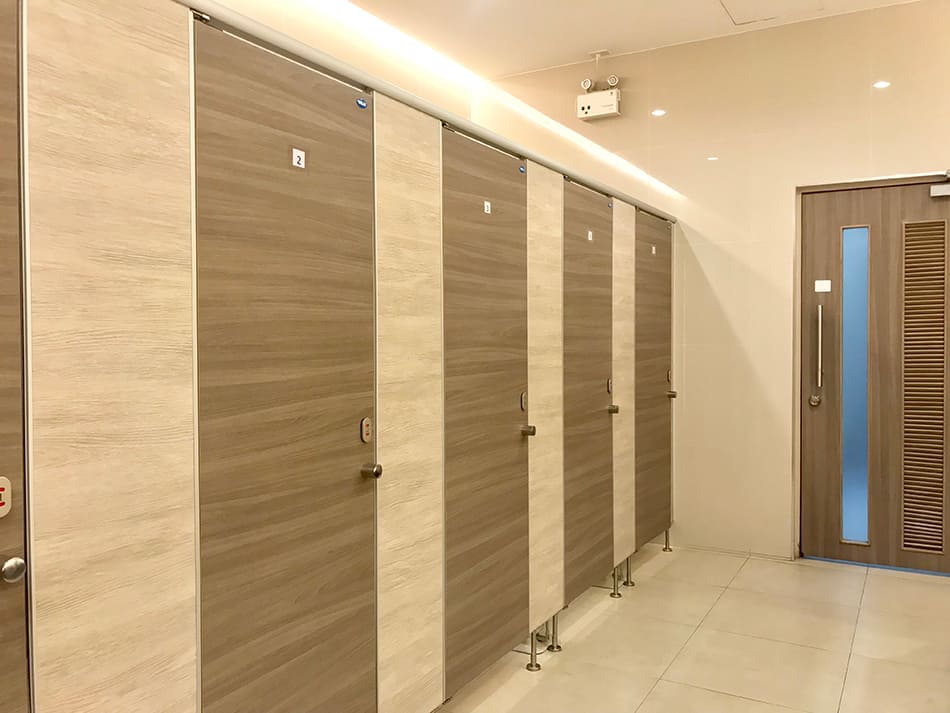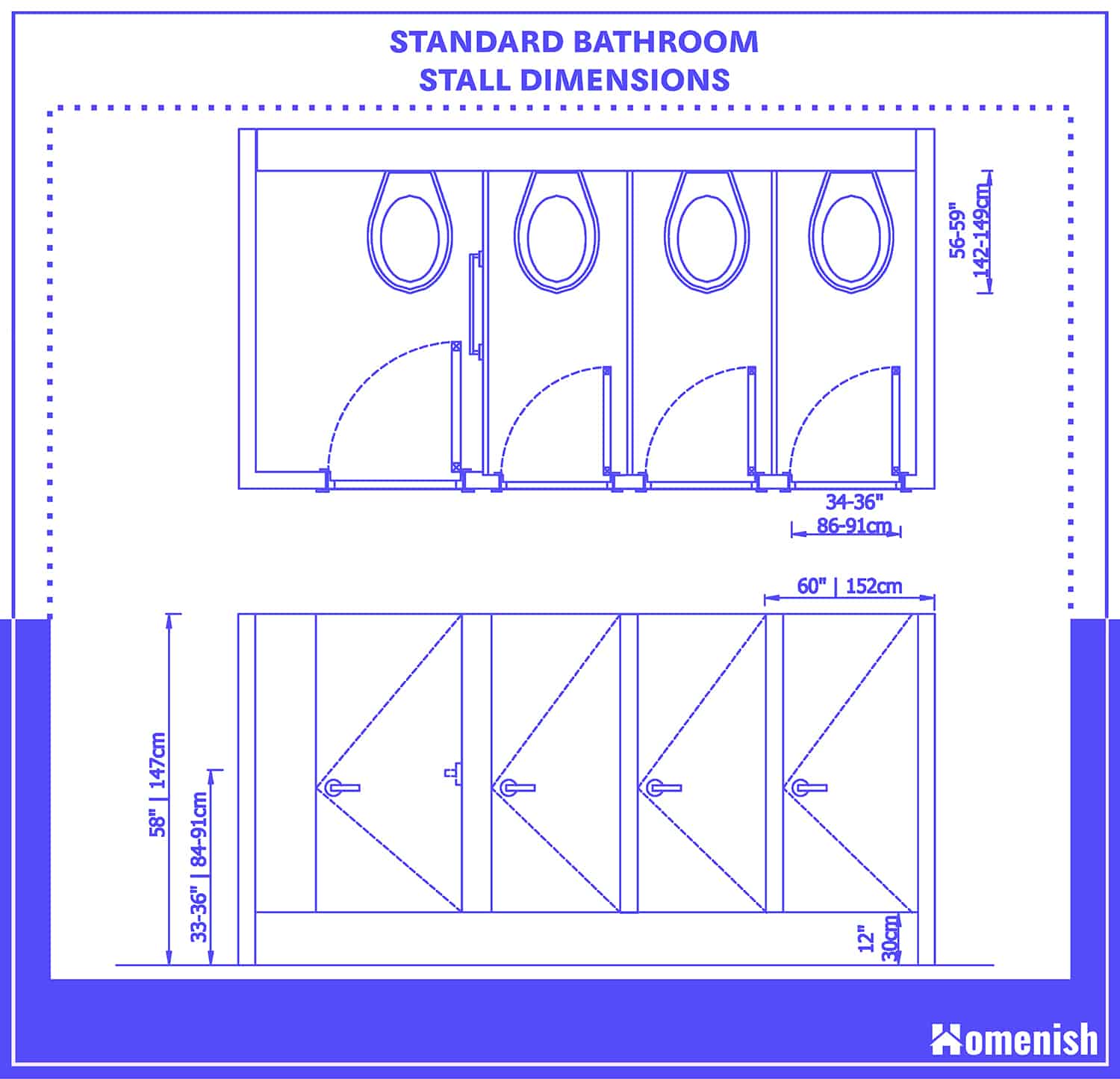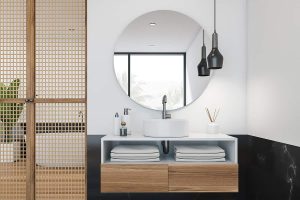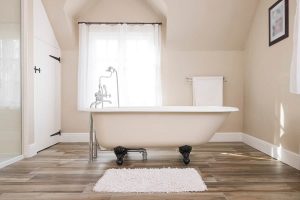If you’re managing a commercial establishment or a building with a public restroom, you need to be aware of bathroom stall dimensions.
Understanding the required dimensions of bathroom cubicles will ensure that the restroom stalls under your management or custody can be used comfortably and safely by the public.
A summary of the essential toilet stall dimensions can be found below:
For bathroom stalls to be ADA compliant (Americans with Disabilities Act), they should be a minimum of 60 inches in width. The door width should be between 34 and 36 inches. The standard height of a divider or toilet partition should be 58 inches. The divider and door should be 12 inches high above the floor. A grab bar is required to make the toilet cubicles ADA compliant, and the grab bar will need to be a minimum of 36 inches long, and no more than 6 inches from the back wall corner. Grab rail height should be between 33 to 36 inches from the floor.
What Is a Bathroom Stall?
Before tackling their recommended dimensions, let’s take a closer look first at bathroom stalls.
By definition, a bathroom stall is an enclosed space with a urinal or toilet for use by the general public. It is believed that bathroom stalls were first introduced in ancient Rome.
Aside from the toilet paper, other additional accommodations of a bathroom stall include a trashbin, coat hook, and toilet seat covers.
These days, bathroom stalls are widely found in public restrooms. These are separated into female and male facilities. It is also common to find bathroom stalls that are accessible for wheelchair-bound users.
Familiar features include grab bars, wider doors, and enough space for users to turn within the stall. Squat-type toilets are more widely used in many Asian and African countries as these are considered to be more hygienic.
Standard Bathroom Stall Dimensions
A toilet stall in a public building must comply with the Americans with Disabilities Act (ADA) passed in 1990. The ADA law requires all business establishments to modify their facilities in order to accommodate people with disabilities. The act covers not only toilet cubicles but also other public areas, such as building entrances and access to various surfaces.
According to this ADA legislation, a toilet stall should be at least 60 inches or 152 centimeters wide. For the door, the width should be between 34 and 36 inches to provide enough space for a wheelchair to pass through it.
The standard depth for a wall-mounted toilet in a public water closet is 56 inches. If the toilet is floor-mounted, it needs to be at least 59 inches deep.
The divider or toilet partition wall has a standard height of 58 inches. Both the dividers and doors should be 12 inches above the level of the floor.
In an ADA-compliant toilet stall, a grab bar is a must-have as this can prevent injuries and accidents. The grab bar in public toilet cubicles should be at least 36 inches long. It should be no more than 6 inches away from the corner of the back wall. The average grab rail height ranges from 33 to 36 inches from the floor.
Types of Toilet Cubicles
When you start to pay attention to public water closets you’ll notice there are differences in restroom partitions in terms of designs, materials used, and installation. In terms of installation style, there are four types of bathroom stalls in the United States. Regardless of the model you choose for your business establishment, it must meet certain toilet stall dimensions in order to be ADA-compliant.
Floor Anchored or Overhead Braced Toilet Stall
The floor-anchored or overhead-braced stall has pilasters that are 82 inches or two meters tall. As indicated by the name of the stall, a floor-anchored or overhead-braced water closet must be mounted or anchored on the floor.
The floor-anchored stall goes up to the ceiling. A rail is likewise installed as this is necessary for connecting with the pilasters. To be ADA-compliant, it needs to be 12 inches over the top of the door.
The ceiling bar provides security and support for areas that have heavy foot traffic, especially those bathrooms found in malls and business establishments in urban areas. A floor-anchored or overhead-braced toilet stall is the most common type of toilet stall found in public restrooms, and it is also the least expensive.
Ceiling Hung Toilet Stall
Ceiling-hung toilet cubicles have no floor pillars, and instead, the entire construction hangs from the ceiling. The distinct advantage of ceiling-hung toilet cubicles is that they have no floor obstacles, making them significantly easier to clean and maintain.
A ceiling-hung water stall gives a modern look, almost like the toilet partition is levitating look. The main disadvantage of ceiling hung toilet stalls is the additional cost which is required because of the need to mount an extra ceiling steel support for the construction. In the long term, the cost may even itself out because of lower maintenance costs.
Floor Mounted Toilet Stall
Floor-mounted stalls are a cost-effective option. Floor-mounted toilet cubicles have columns with a standard height of 70 inches, stretching from the floor.
The stalls use the floor for support, while the over-the-top area is clear. A key advantage of floor-mounted toilet stalls is that they are easy to install, needing a mere 12 inches to penetrate the walls. Although the cost is low, the installation of floor-mounted stalls is considered outdated these days.
Floor to Ceiling Anchored Toilet Stall
Floor-to-ceiling anchored toilet stalls are considered the most durable type of stall installation due to both floor and ceiling support. Floor-to-ceiling anchored toilet cubicles are the best choice for restrooms with a lot of foot traffic or restrooms that might get abused because they are the most likely to remain in place for longer.
Conclusion
Standard bathroom stall dimensions have been determined for a reason. With populations growing, especially in urban areas, the need for public restrooms also grows.
Knowing the standard toilet stall dimensions is just the beginning for a property manager or business owner in as far as complying with government requirements. Naturally, you should comply with local and federal requirements if you are to put up public toilets or bathrooms in your business.
